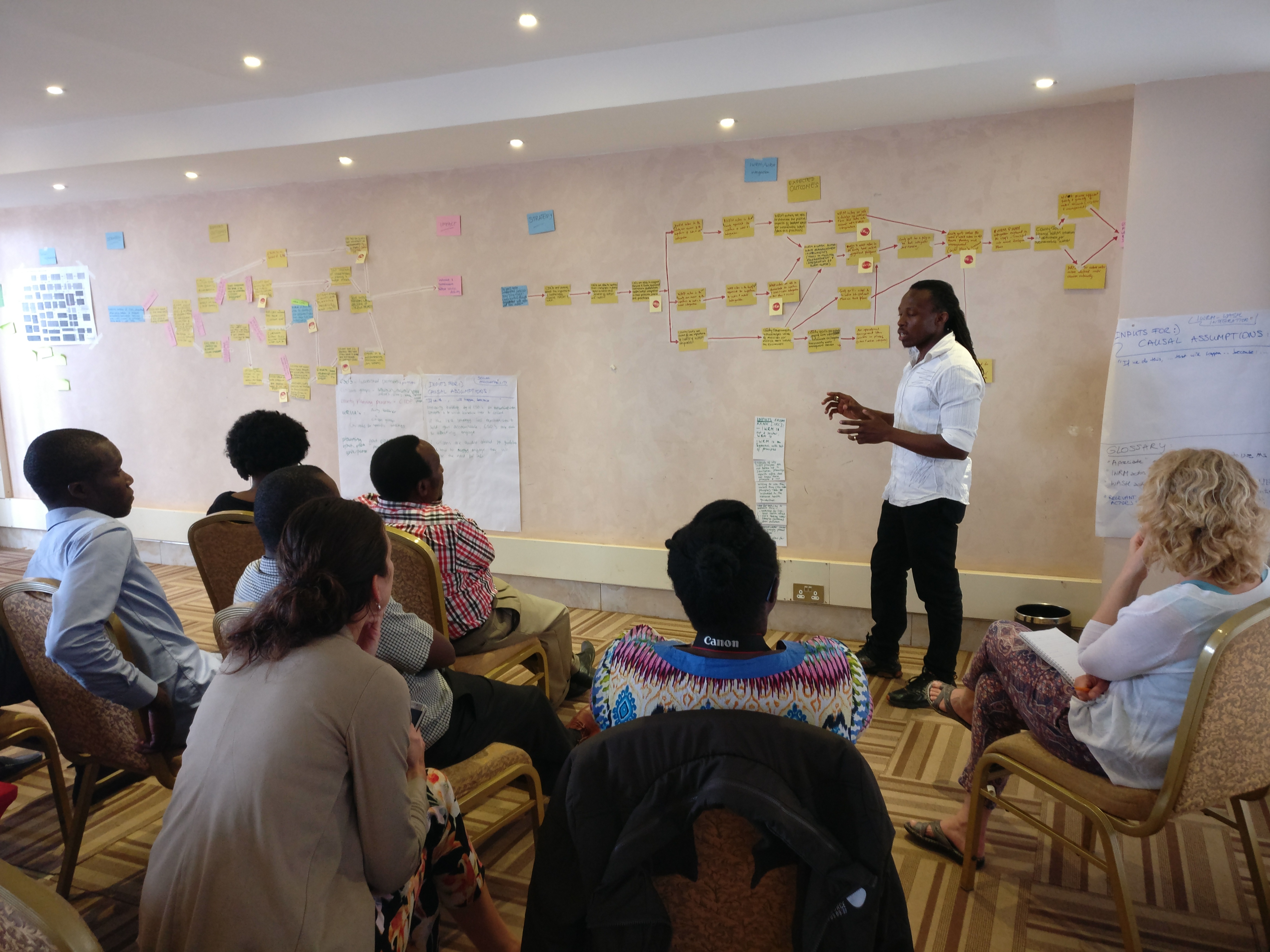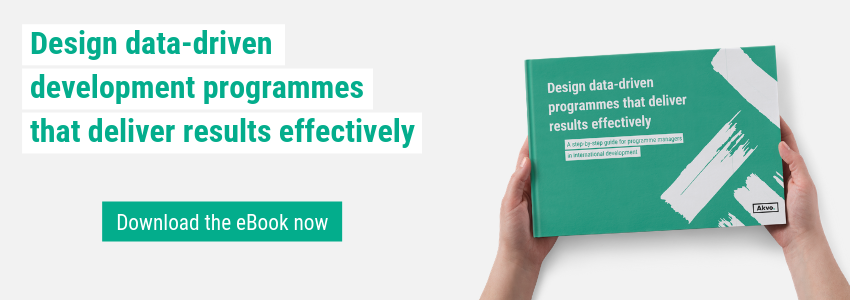Designing a programme in a constantly changing environment can be challenging. The context in which a programme operates is often complex, with many different stakeholders and factors involved. For that reason, it’s important to base the design of a programme on an understanding of the context and choose an approach that allows for flexibility instead of stasis. That way, adaptations can be made when needed. Even a relatively straightforward data collection programme needs to keep in mind which stakeholders will be involved and which problems and opportunities exist, at the start and throughout.
The methods explained in this article are geared towards optimising the outputs of your programme design and implementation while emphasising the importance of the design process in itself, which will help stakeholders align and feel ownership of the programme. It’s important to carefully document the entire design phase in order to capture lessons learned that can be shared within the sector and can be used to feed into future programmes. This approach to programme design is Theory of Change (ToC) based, a methodology which helps you to structure reality and understand how your programme can start a process of change.
If you have a certain impact in mind that you want to contribute to as a programme, a ToC helps you to understand which different outcomes you need to achieve in order to reach your envisioned impact and how these outcomes are interrelated. While the word impact refers to the ultimate change that your programme aims to contribute to, the outcomes are changes that need to happen in between. Designing a ToC together with all stakeholders will result in a common understanding and co-ownership of the programme and will facilitate the planning of your activities in a participatory way. It will also help you to discover what you collectively want to learn, and therefore to decide what you want to monitor during the programme.
This post takes you through the three steps involved in programme design. It’s important to remember that, while the steps are presented in a sequence, the three are circular in nature. For example, in order to be able to map all relevant stakeholders, there needs to be an awareness of the context and of what the problems and opportunities are. You might realise after the context analysis that some important stakeholders were overlooked during the analysis. Each step in a ToC based programme design can make you realise that something was missing or not clear enough in a previous step and may lead to revisions.
How to design your programme in three steps
Step one: Conduct a context analysis
Before designing the ToC, you need to have a thorough and common understanding of the context in which your programme is operating. Therefore it is good practice to start with a context analysis, which consists of a factor, issue and stakeholder analysis, and maps of the findings.
Step two: Design your Theory of Change
Define an impact that you want to reach or contribute to with your programme and think backwards. Which outcomes need to be realised to reach the impact, and how are they interconnected? Which strategies will help to achieve these outcomes? Make sure that all your underlying causal assumptions are recorded and made explicit.
Step three: Build your monitoring framework
From the ToC, collectively agree on what key expected outcomes (and impact) all stakeholders want to monitor. For those, design a planning, monitoring, evaluation and learning (PMEL) framework, with indicators and means of verification. In addition, monitor the causal assumptions that you are unsure about. Based on your monitoring findings, the ToC should be revised on a yearly basis and adjusted accordingly.
All three steps require a highly participatory approach, to ensure relevance and co-ownership from the start.
Do you want to learn more? Download our eBook!



